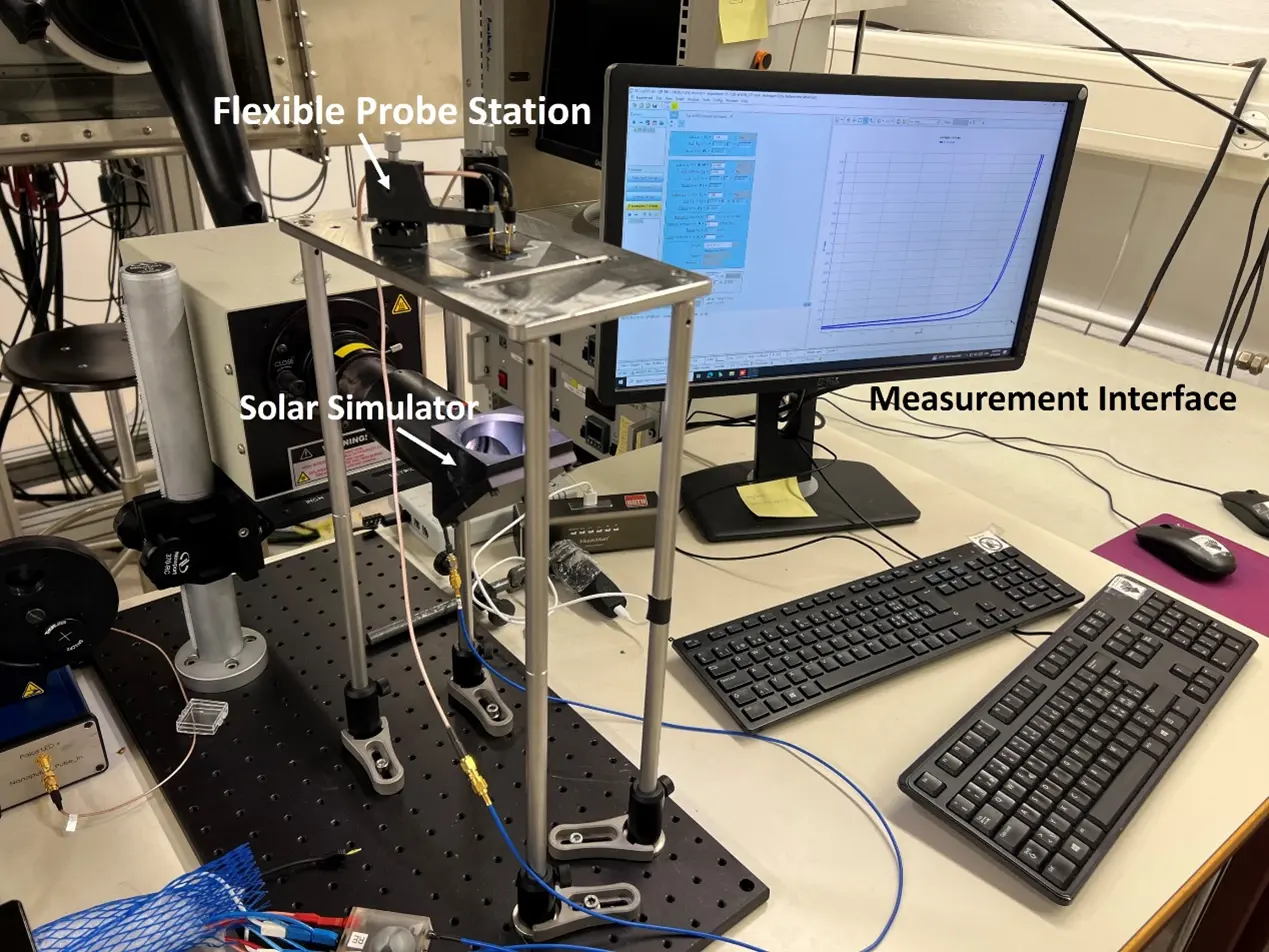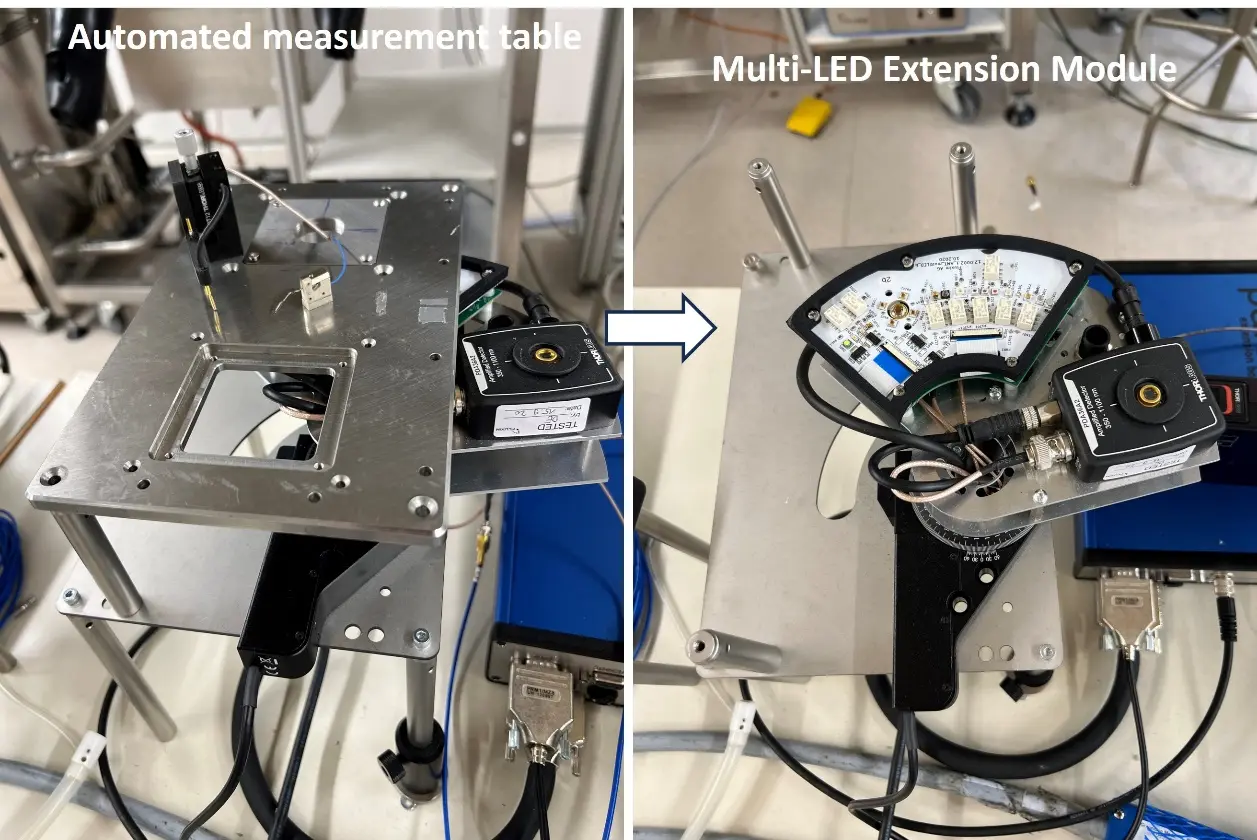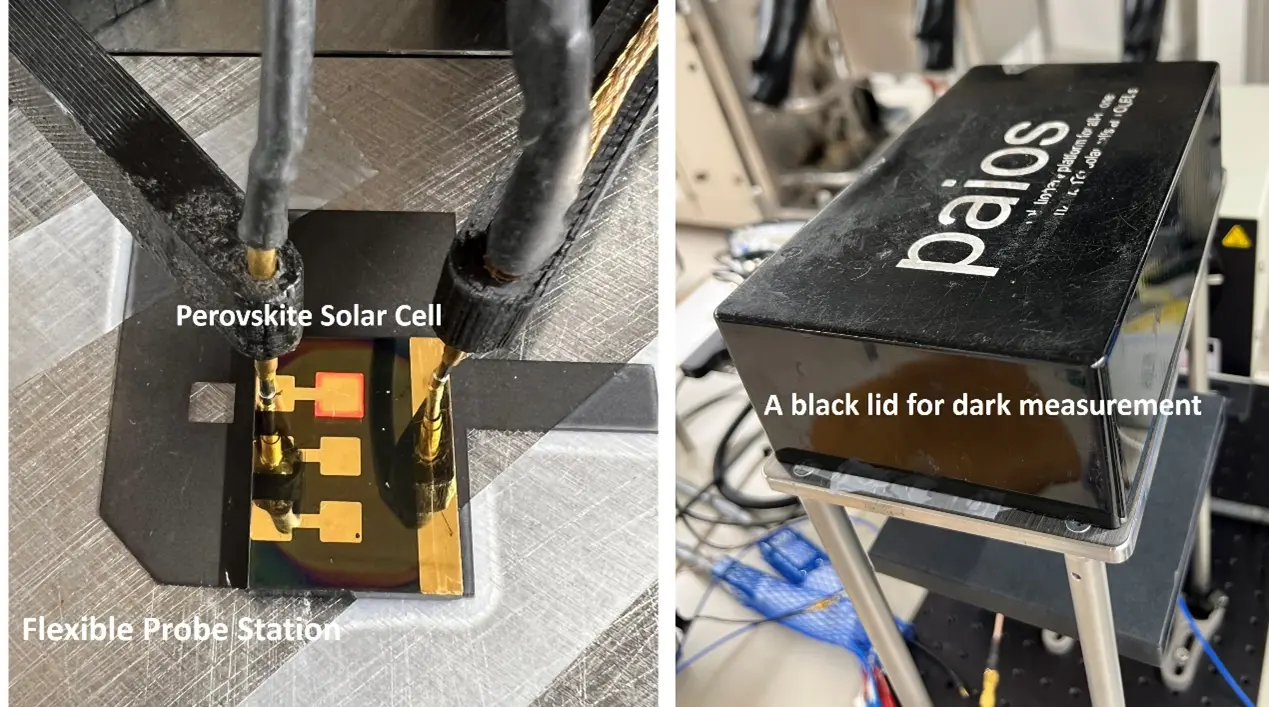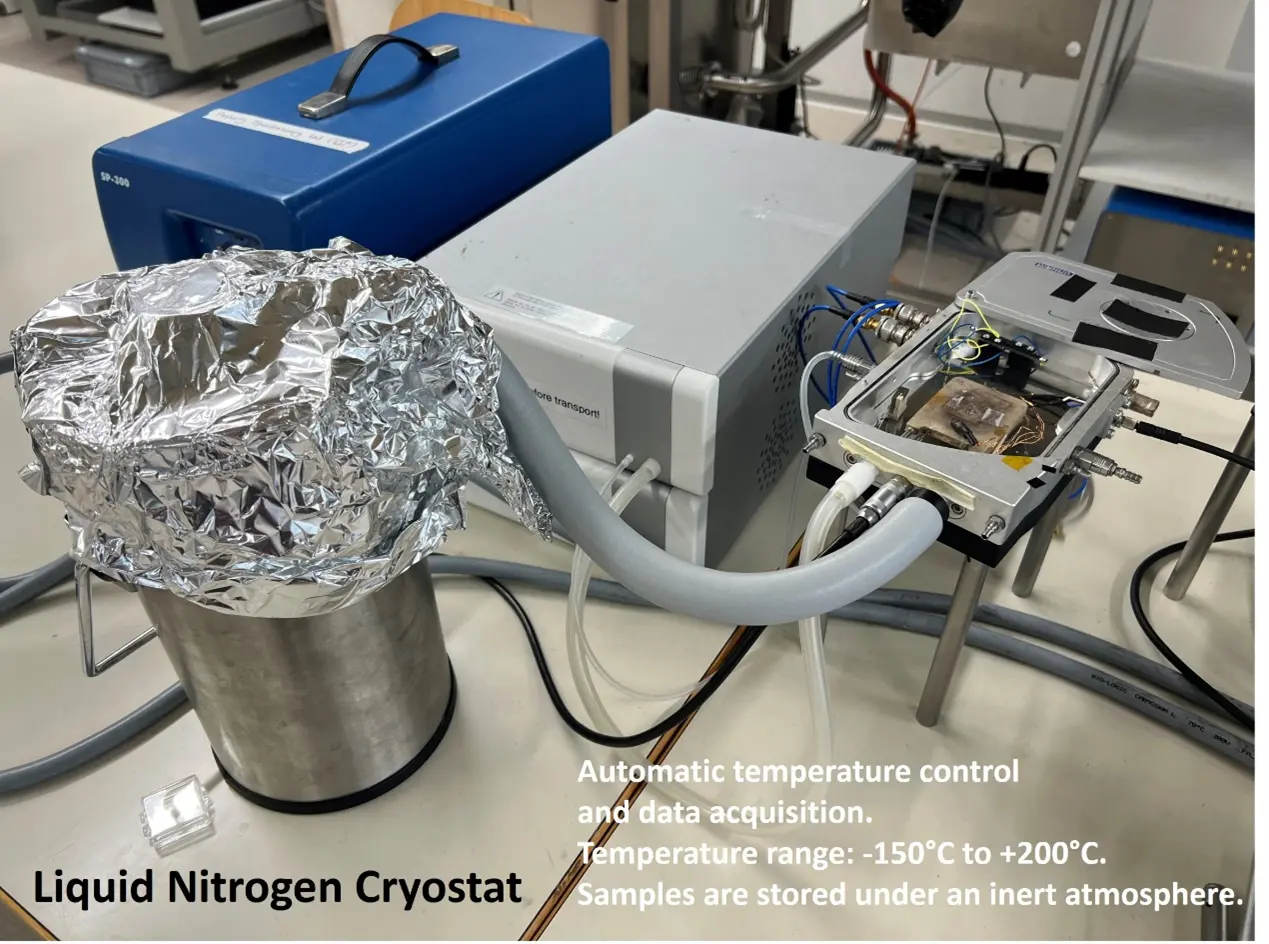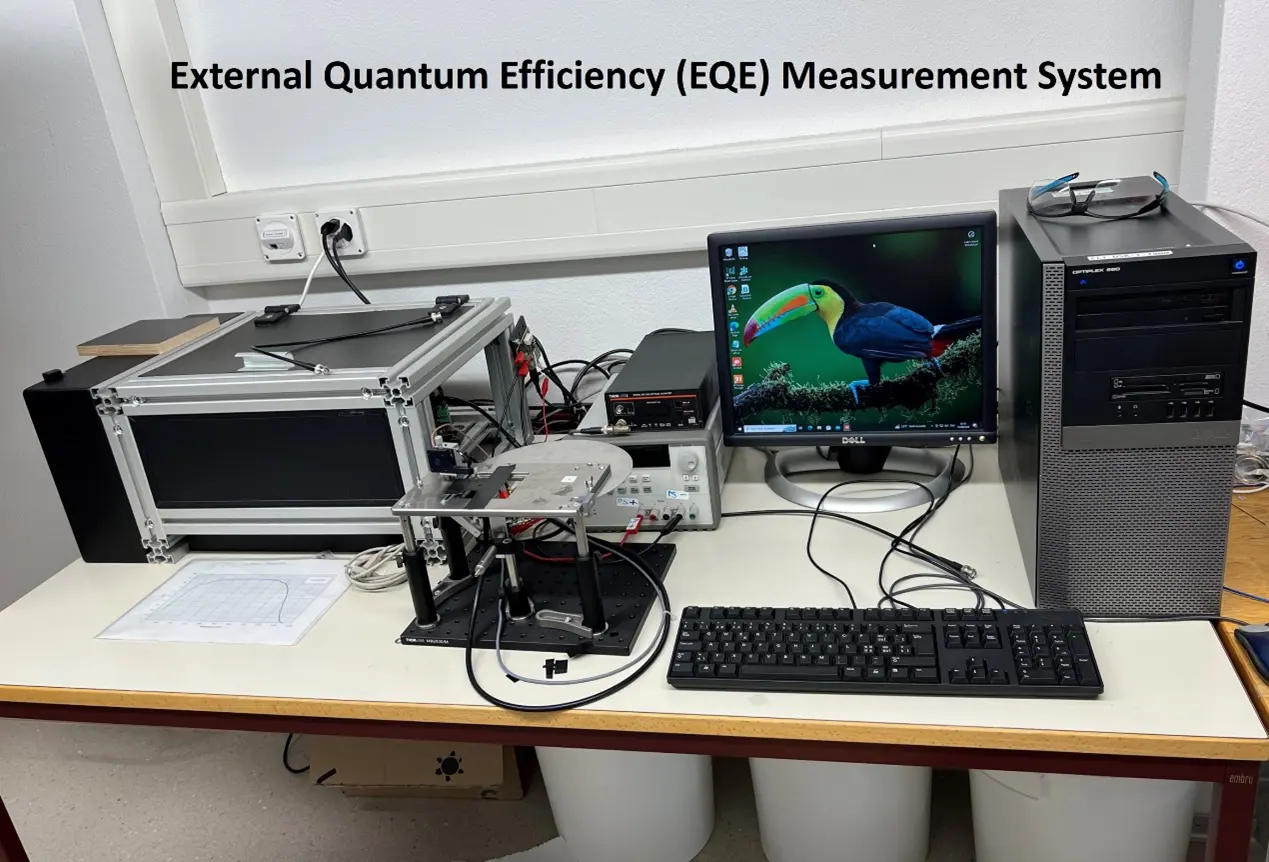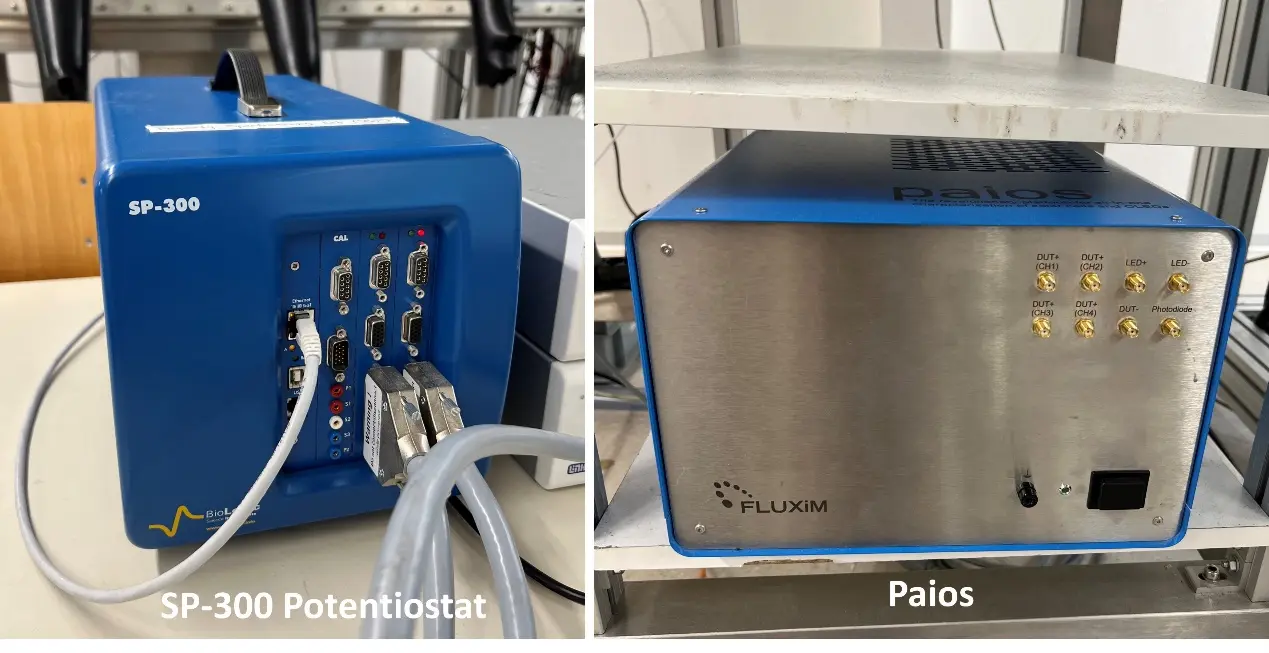Solar Cell Characterization
Our main expertise is in the device physics, which requires detailed opto-electronic characterization. Our equipment ranges from the standard tools needed for solar-cell characterization to electrochemical techniques to various transient measurements under varied temperature and illumination conditions. Beyond characterizing our own devices, we are partner in various projects.
The optoelectronic and electrical characterization system in our OEPHO lab is designed to comprehensively analyze the optoelectronic and electrical properties of devices, such as current-voltage characteristics, impedance, external quantum efficiency (EQE), etc. This system includes tools such as a solar simulator to replicate standard sunlight conditions, a flexible probe station, an electrical measurement system, an EQE measurement system, etc. Moreover, our lab also has an automated measurement table from Fluxim, which integrates a commercial photodetector, spectrometer, white LED, multi-LED module (additional 15 monochromatic LEDs, 300-1600 nm available), and nanosecond pulser module. The white or monochromatic LEDs can be used for illuminating solar cells in steady-state IV-curves as well as fast-light pulses and light-modulated experiments. By switching to the photodetector or spectrometer we can furthermore analyze the electroluminescence properties of efficient solar cells. This table can also be employed to measure the perovskite light emitting diode (LED) spectrum, efficiency roll-off, and transient electroluminescence. Having electrical feedthroughs into the gloveboxes, measurements can also be performed under inert atmosphere.
Automated and various electrical measurements in time and frequency domain can be performed with the all-in-one tool Paios and a Biologic Potentiostat SP 300.
Paios performs a large variety of electrical and optical characterizations on perovskite solar cells and LEDs with one click. One gets consistent and precise measurement data, which can be directly compared in the measurement software. More details can be found on the FLUXiM Website. Combined with the liquid nitrogen cryostat, we can perform all Paios experiments at low and high temperatures (-150°C to +200°C) under an inert atmosphere.
The SP-300 potentiostat with two channels is a fast, sensitive, stable, and modular electrochemical workstation. Various measurements can be done with this equipment, such as voltammetric techniques, impedance spectroscopy, pulsed techniques, etc, where the two channels can be synchronized. We are also using it to measure electroluminescence yields.
